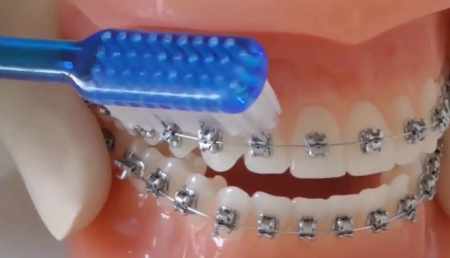In most cases, wobbling teeth under braces is a normal tooth alignment process. Let’s take a closer look at this issue.
Treatment with lingual braces, ceramic self-ligating braces, and classic metal braces is accompanied by the same adaptation processes, causing some discomfort for the patient. Headaches, aching jaws, orthodontic appliances rubbing the mucosa of the cheeks or gums, the tongue getting hurt on the sharp angles of the brackets, and difficulty pronouncing certain letters.
This is a standard situation that potential bracket wearers are well aware of. But not many people are aware of the fact that their teeth will wobble. Faced with such a problem, adults panic: “It takes so long to install braces to leave me without teeth?!” In fact, even this frightening symptom fits within the standard framework. So what explains the unusual mobility?
Why Does the Orthodontist Loosen the Teeth
When the orthodontist is installing the bracket system, the first thing he does is to make the teeth move under the pull of the orthodontic arch, and then he can make them move along the calculated trajectory. And if they have started to wobble, then everything is going according to plan. How is it possible to move the teeth from their usual position and at the end re-fixate them in the jawbone?
Teeth with braces wobble due to the coordinated work of such cells as osteoblasts and osteoclasts. The dental crown and root are connected by a ligament, which, in turn, is supported by bone tissue. When the tooth begins to tilt under the pulling force, the distance between the crown and ligament increases on one side and decreases on the other. Osteoblasts begin to fill in the lack of bone tissue to prop up the tooth in its new place, and osteoclasts begin to remove the “excess”, to resorb it. The compressed connective ligament is released over time, and the tooth is allowed to take the new position planned by the orthodontist.
Cycles of resorption and augmentation during orthodontic treatment are repeated many times, causing a kind of “rejuvenation” and strengthening of the bone tissue and, of course, correcting the tooth row. But because it takes a long time to increase tissue density and resorption is faster, the teeth remain moving for quite a long time.
How to Accelerate Tooth Alignment
While the tissues are weakened and the teeth are loose, it is necessary to eliminate excessive stress on them.
- You should avoid chewing whole hard carrots and hard apples, chewing caramels, nuts and seeds.
- Give up stringy and sticky foods such as dried fruit, toffee and chewing gum.
- Don’t chew your nails, pens, or pencils. This way you will not only protect your weakened teeth, but also preserve the integrity of your braces.
- Preference should be given to porridge, vegetable purees, meat pates.
In order for the regeneration of bone to proceed normally and the teeth by the time the orthodontic braces are removed not too wobbly, you should include in your diet foods that contain proteins, as well as all the necessary minerals and vitamins.
Can I Not Wear Retainers After Braces?
Now that we understand the reason for the mobility, even the terminally tired from wearing braces, the patient will not refuse the “unexpected” surprise – their replacement with a removable mouth-guard or retainer.
It is not enough to align the teeth with braces. You will have to keep them in the correct position for some time, until the tissue regeneration process is complete. Otherwise, released from the powerful influence of the arch, they will due to the muscle memory begin to “sprawl” chaotically.
Retention period, which is an obligatory stage of orthodontic treatment, can last quite a long time – up to 3-4 years. Its duration is determined by the age of the person and the severity of dental pathology. At first, an individually fabricated retainer must be worn continuously for several months, with removal for hygiene procedures. Then, on the recommendation of the attending physician, it will be possible to rest from it at night.
Teeth Wobble Under Braces Due to Disease
In some cases, during dental correction, mobility increases abnormally due to the development of osteomyelitis, osteoporosis, or exacerbation of periodontal disease (gingivitis, periodontitis, and periodontal disease).
No one is immune from the occurrence of bone disease. But gum problems can be the result of insufficient care for braces and the mouth or a lack of professional diagnosis in the preparatory stage. Prior to the placement of orthodontic appliances must be treated for gingivitis, and periodontal disease and periodontitis transferred to the stage of stable remission.
In any case, the attending physician will do everything possible to eliminate the problem and minimize its consequences.






